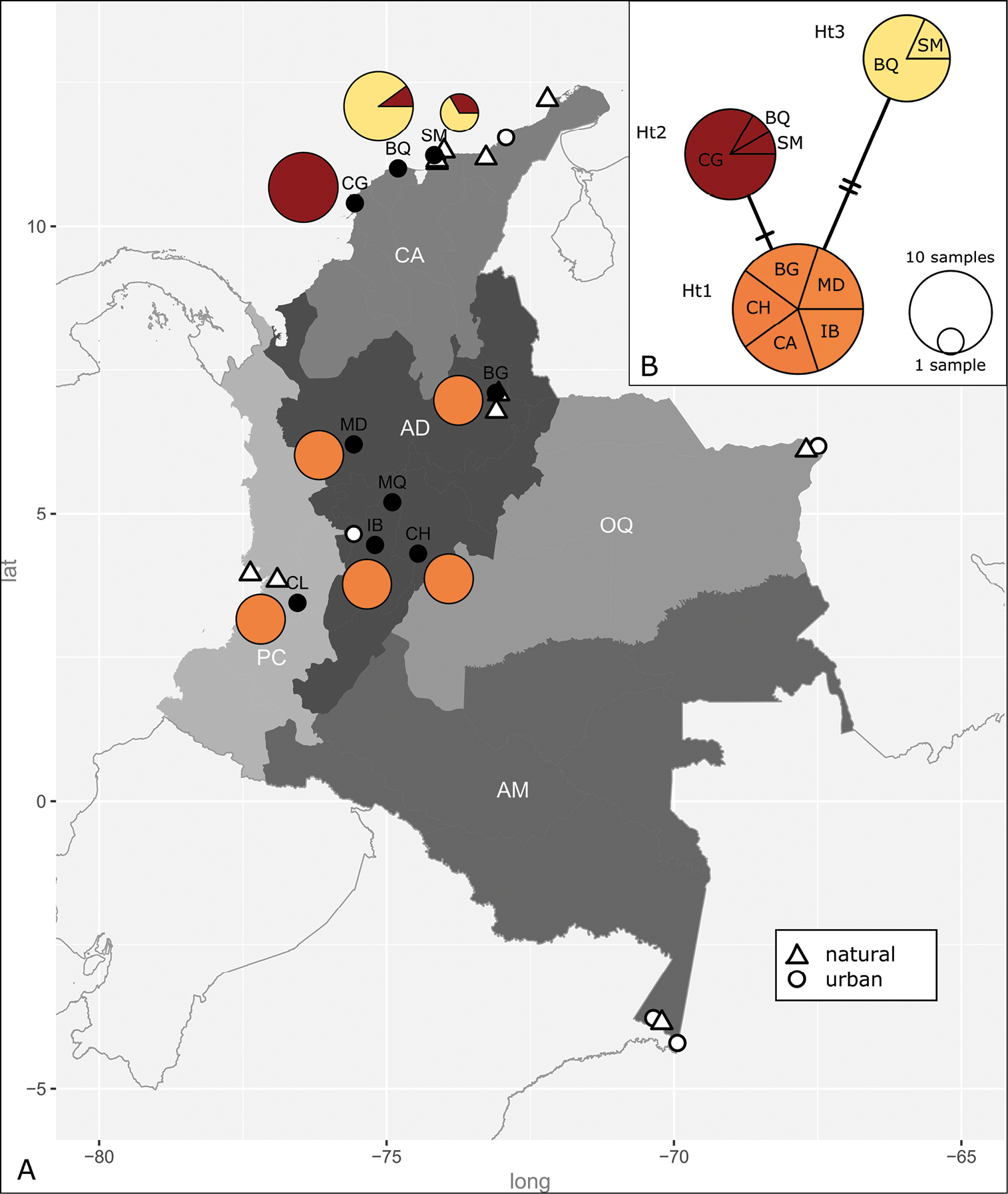
|
||
|
Presence-absence and haplotype distribution (A) and network (B) for Eleutherodactylus johnstonei in Colombia. A Small symbols: circles = urban areas; triangles = natural areas; filled symbols = presence, blank symbols = absence. White labels encode major geographic regions based on affiliation of administrative regions (www.colombia.com/colombia-info/informacion-general/geografia/regiones/): CA, Caribbean region; AD, Andean region; PC, Pacific region; OQ, Orinoco region; AM, Amazonas region. Black labels encode cities with presence of E. johnstonei: SM, Santa Marta; BQ, Barranquilla; CG, Cartagena; BG, Bucaramanga; MD, Medellín; MQ, Mariquita; IB, Ibague; CH, Fusagasuga-Chinauta; CL, Cali. Large coloured circles present haplotype frequencies at sampled localities. Orange: Ht1, red: Ht2, yellow: Ht3; circle sizes refer to numbers of samples at each locality as illustrated in inlet B Haplotype network based on the Integer-Neighbour-Joining Network implemented in POPART (Leigh and Bryant 2015). Mutations segregating haplotypes are depicted as hatch marks; partitions illustrate localities (abbreviations as in A) featuring the respective haplotype; circle and partition sizes represent numbers of samples. |